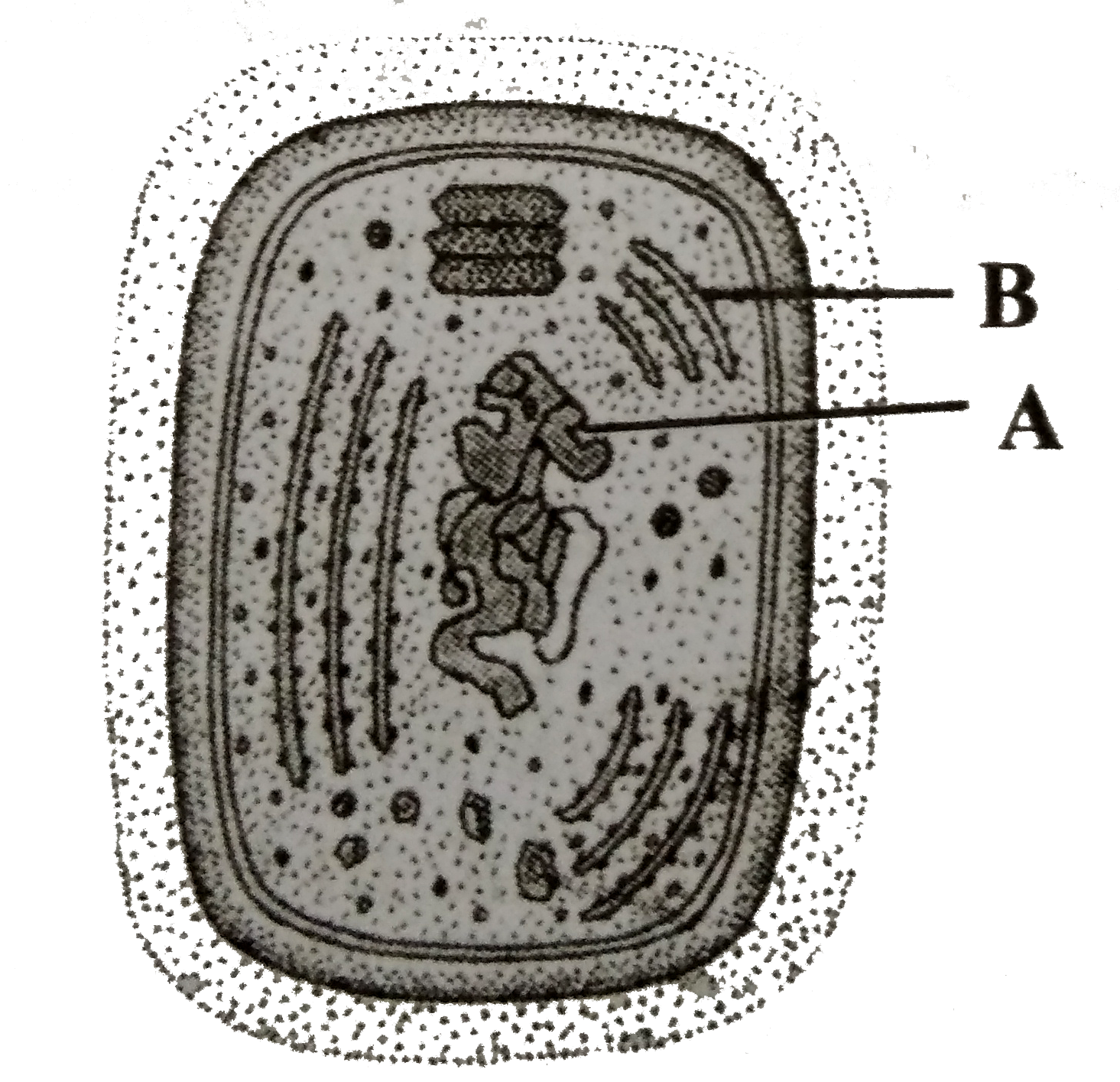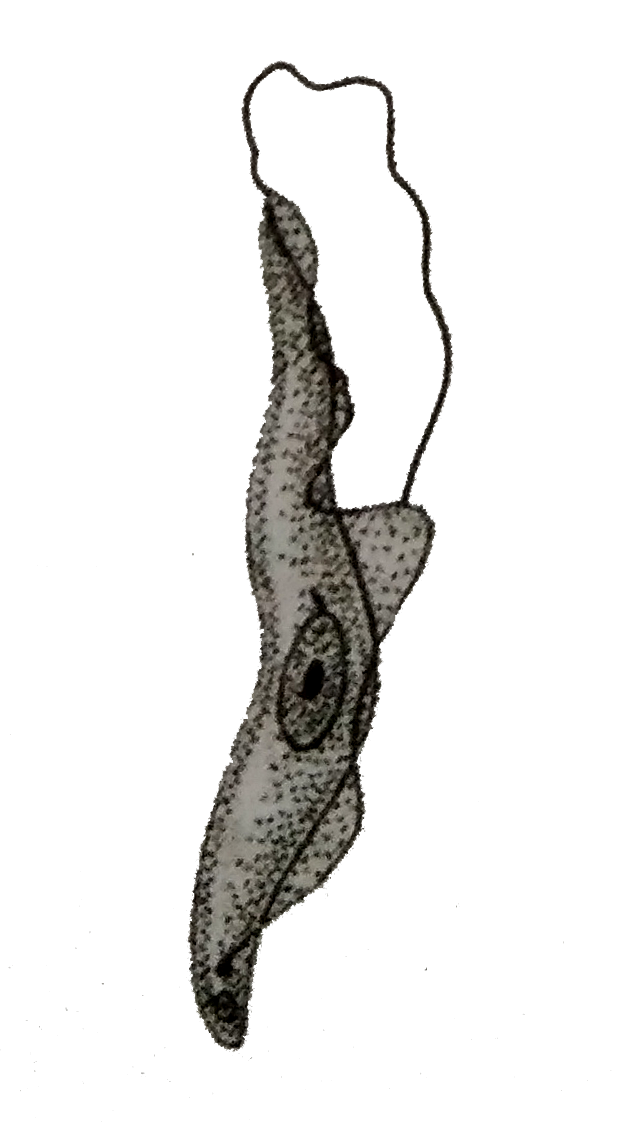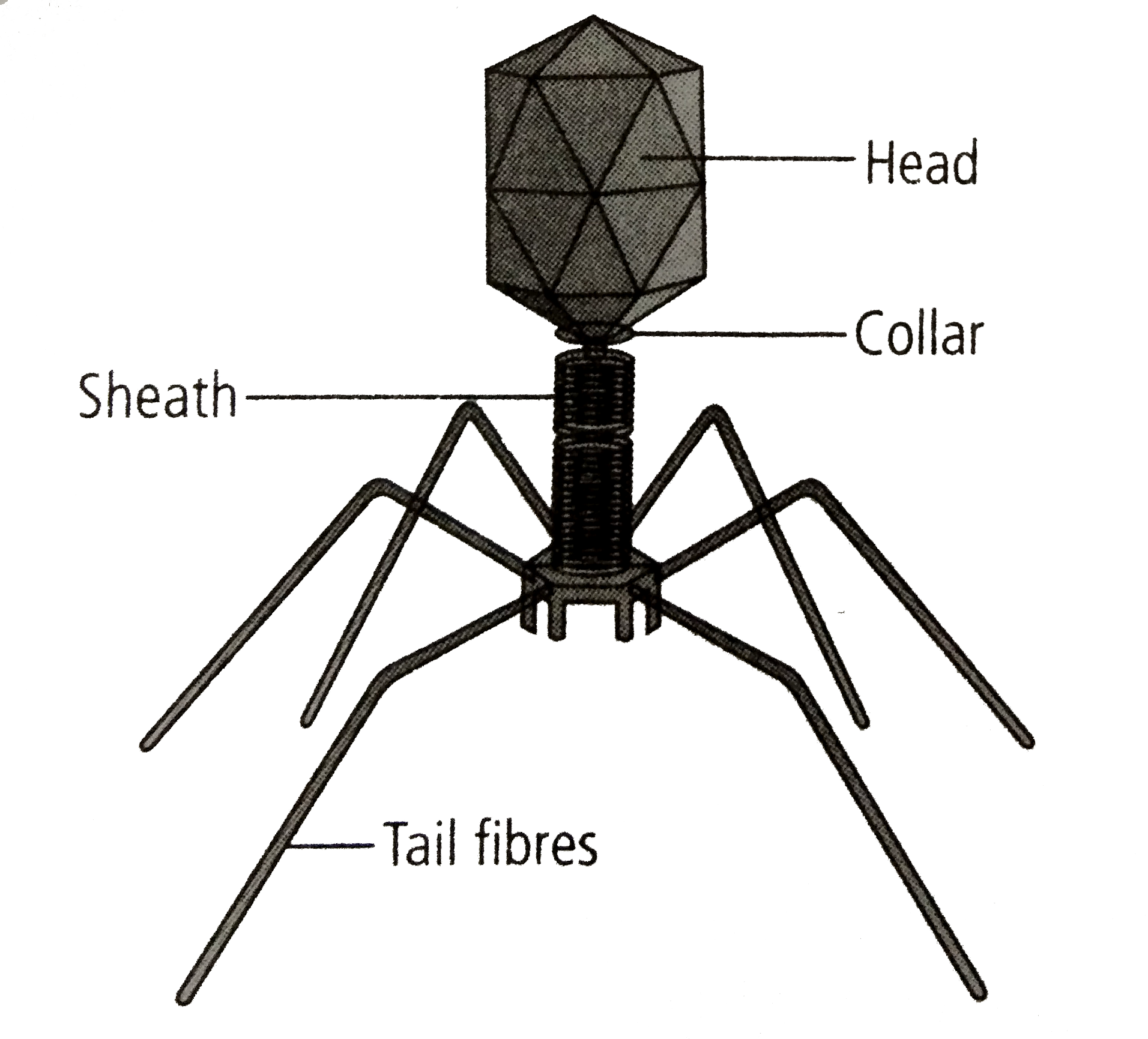Complete Solutions to Biological Classification of chapter BIOLOGICAL CLASSIFICATION of Class 11 book with complete answers and questions
| Class 11 | BIOLOGY |
| Chapter | BIOLOGICAL CLASSIFICATION |
| NCERT FINGERTIPS | Biological Classification |
| Number Of Questions | 100 |
| Academic Year | 2023-24 |
The classification system proposed by Linnaeus was a ______kingdom system of classification.
View SolutionWhich of the following characters served as the criteria for five kingdom system of classification as used by R.H. Whittaker?
View SolutionIn Whittaker's five kingdom system of classification, eukaryotes are distributed among
View SolutionStudy the following table carefully and select the correct option for 1,2,3 and 4.

View SolutionBacteria are grouped under four categories according to their shape. Study the given figures and select the correct option regarding this.

View SolutionRead the following statements regarding methanogens and select the correct option.
(i) They are included in the group Archaebacteria.
(ii) They are responsible for the production of biogas in gobar gas plants.
(iii) They live in hot sulphur springs.
(iv) They are strictly anaerobic.
View SolutionWhich of the following statements is incorrect regarding the structure of a typical bacterial cell?
View SolutionCyanobacteria are classfied under which of the following kingdoms?
View SolutionPhotosynthetic pigmetns of cyanobacteria (blue green algae) include
View SolutionCyanobacteria are used in agricultural fields for crop improvement because they cause
View SolutionGiven figure is of filamentous. Blue green alga Nostoc. Identify the parts marked as A and B and select the correct option.

View SolutionSelect the correct statement regarding heterocysts.
View SolutionGiven figure represents the ultrastructure of a typical cyanobacterial cell. Identify the different parts and select the correct option for A and B

View Solution______ bacteria oxidise various inorganic substances such as nitrates, nitrites and ammonia and use the released energy for ATP production. They play an important role in recycling of nutrients (N,P,Fe,S etc).
View SolutionIn five-kingdom classification system, the kingdom that includes, the blue-green algae, nitrogen-fixing bacteria and methanogenic archaebacteria is
View Solution_____ are important, decomposers that cause decay and decomposition of dead bodies of plants and animals.
View SolutionSelect the pair consiss of plant or animal bacterial diseases.
View Solution____ is the most common method of reproduction in bacteria.
View SolutionMycoplasmas are classified under which of the following kingdoms?
View SolutionWhich one of the following is an incorrect statement regarding mycoplasma?
View SolutionRead the following statements and select the correct option
Statement1: Almost all bacteria possess lipoproteinaceous plasma membrane.
Statement2: The plasma membrane of archaebacteria as well as eubacteria have same type of lipids.
View SolutionWhich of the following statements is incorrect?
View SolutionWhich of the following kingdoms has no well defined boundaries?
View SolutionWhich of the following organisms have been placed under kingdom Protista?
View SolutionMembers of kingdom Protista are primarily
View SolutionThe kingdom Protista forms a link with kingdom
View SolutionWhich of the following options incorrectly distinguishes the kingdoms Monera and Protista?
View SolutionWhich of the following groups of organisms are included under chrysophytes?
View SolutionChrysophytes are
View SolutionThe cell wall is composed of two thin overlapping shells which fit together like a soap case in
View SolutionSiliceous frustules of diatoms being indestructible, piled up at the bottom of ocean and formed a thick bed over billions of years. Such a thick bed is known as
View SolutionDiatomaceous earth is used for all except
View SolutionDinoflagellates are mostly
View SolutionA slide under microscope shows following features:
(i) Unicellular
(ii) Well defined nucleus
(iii) Biflagellate-one flagellum lying longitudinally and the other transversely
what would identify it as?
View SolutionWhich group of organisms is represented by the given figure?

View SolutionRed tides in warm coastal water develop due to the abundance of
View SolutionRead the following statements regarding euglenoids and select the incorrect ones.
(i) These are mostly freshwater organisms found in stagnant water.
(ii) Their body is covered by a protein rich layer called pellicle which makes their body flexible.
(iii) They are photosynthetic in the presence of sunlight but become heterotrophs in the absence of sunlight.
(iv) They usually prosses two flagella, one long and one short.
(v) Euglenoids are multicellular ciliate protists
View SolutionThe given statements describe a group of organisms.
(i) Instead of a cell wall they have a protein rich pellicible making their body flexible.
(ii) They have 2 flagella, a short and a long one.
(iii) They show mixotrophic nutrition
(iv) They are connecting link between plants and animals.
which of the following groups is referred to here?
View SolutionStudy the given figure showing structure of Euglena and select the option that correctly identifies A,B,C and D.

View SolutionRead the following statements and select the correct option
Statement 1: Euglena can be considered as a plant due to the presence of chlorophyll.
Statement 2: Euglena cannot be classified on the basis of two kingdom system of classification.
View SolutionWhich of the following statements about Euglena is correct?
View SolutionIdentify the given figure and select the correct option.

View SolutionMatch column I with column II and select the correct option from the given codes.
`{:(,"Column I","Column II"),((A),"Chief producers in oceans",(i)"Euglenoids"),((B),"Red tides",(ii)"Diatoms"),((C),"Mixotrophic nutrition",(iii)"Slime moulds"),((D),"Plasmodium",(iv)"Dinoflagellates"):}`
View SolutionThe multinucleate slimy mass of protoplasm which forms the body of slime moulds is called as
View SolutionWhich of the following combinations of characters is true for slime moulds?
View Solution_____ is a parasite of large intestine of human beings and causes the disease____
View SolutionCausal organisms of sleeping sickness and kala-azar belong to which of the following groups of protozoan protists?
View SolutionIdentify the given figure of a protozoan protist and select the correct option.

View SolutionWhich of the following is a ciliated protozoan?
View SolutionRefer to the given figure of Paramecium caudatum and select the option that correctly identifies A,B,C and D

View SolutionThe sporozoa are all internal ____ that typically have an infective cyst statge in their life cycle. An example of sporozoa is the genus___ which causes malaria.
View SolutionWhich of the following is a mismatched pair of protozoan group and its example?
View SolutionEukaryotic, achlorophyllous and heterotrophic organisms are grouped under which of the following kingdoms?
View SolutionCoenocytic mycelium is
View SolutionMain component of the cell wall of fungi is
View SolutionFungi show asexual reproduction by all of the following kinds of spores except
View SolutionSexual reproduction in fungi occurs by all of the following except
View SolutionDikaryophase is a specific characteristic of
View SolutionGiven below is the representation of life cycle of members of classes Ascomycetes and Basidiomycetes. Select the correct option for processes A,B and C.

View SolutionWhich of the following classes of kingdom Fungi are characterised by the presence of coenocytic, multinucleate and branched mycelium?
View SolutionFungi lacking crosswalls in the mycelium belong to Class
View SolutionWhich of the following statements regarding the class phycomycets is correct?
View SolutionWhich of the following fungi is a parasite on mustard plant and causes the disease white rust of crucifers?
View SolutionThe wonder drug, penicillin is extracted from which of the following species of penicillium?
View SolutionIn Pencillium, the asexual reproduction takes place by
View SolutionFungi producing 8 spheres in a sac belong to the class
View SolutionTerm used for the closed ascocarp is
View SolutionWhich of the following statements is not correct regarding the class Ascomycetes?
View SolutionThe given organism belongs to class

View SolutionWhich of the following statements is correc regarding sexual reproduction in Basidiomycetes?
View SolutionRefer to the given figure and select the incorrect option regarding it.

View SolutionSelect the option that correctly identifies the different genera (A,B,C and D) of kingdom Fungi shown in figure.

View SolutionMatch column I with column II and select the correct option from the given codes.
`{:("Column I","Column II"),("Edible delicacies",(i)"Penicilium,Streptomyces"),("Experimenttal genetics",(ii) "Neurospora crassa"),("Source of antibiotics",(iii)"Puccinia,Ustilago"),("Rust and smut diseases",(iv)"Morels and truffles"):}`
View SolutionMatch the column I with column II and select the correct option from the given codes.
`{:("Column I","Column II"),("Edible delicacies",(i)"Sac fungi"),("Ascomycetes",(ii)"Algal fungi"),("Basidiomycetes",(iii)"Fungi imperfecti"),("Duteromycetes",(iv)"Club fungi"):}`
View SolutionWhich of the following statements is incorrect about the class Deuteromycetes?
View SolutionWhich one is an incorrectly matched pair?
View SolutionSelect the incorrect match.
View SolutionWhich of the following contains insectivorous plants?
View SolutionWhich of the following statement regarding kingdom plantae is correct?
View SolutionKingdom plantae includes
View SolutionWhich of these is a defining character of plant?
View SolutionMatch column I with column II and select the correct option from the given codes.
`{:("Column I","Column II"),("Monera",(i)"Chlamydomonas,Solanum"),("Fungi",(iii)"Euglena,Trypanosoma"),("Plantae",(iv)"Mucor,Pencilium"),("Animalia",(v)"Felis,Panthera"):}`
View SolutionWhich of the following statements regarding kingdom Animalia is incorrect?
View SolutionRead the following statements and selec the correct option
Statement 1: Virsuses are inert crystalline structure outside a living cell.
Statement 2 : Virsus are cellular organisms.
View SolutionStudy the given figure of structure of TMV (Tobacco Mosaic virus) and select the option that correctly identifies the labellings A and B

View SolutionWho crystallised and isolated viruses for the first time?
View SolutionSelect the mismatched pair.
View SolutionVirion is
View SolutionWhich of the following statements regarding viruses are correct?
(i) These are cellular, infectious, nucleoprotein particles.
(ii) They can be grown in culture medium.
(iii) Genetic material is either DNA or RNA, but never both.
(iv) They can be crystallised.
View SolutionRefer to the given figure and select the correct option.

View SolutionGiven is an electron microscopic structure of a `T_(2)` bacteriophage, identify the labelled parts P,Q,R,S and T and select the correct option.

View SolutionSelect the pair that consists of viral diseases.
View SolutionWhich one of the following is an incorrrect pair?
View SolutionIn plants, mosaic formation, leaf rolling and curling, yellowing of plant, vein clearing, dwarging and stunted growth, necrosis etc. are the symptoms of
View SolutionWhich of the following is not a viral disease of plants?
View SolutionRead the given statements that describe certain infectious particle.
(i) It was discovered T.O. Diener and was found to be smaller than viruses.
(ii) It causes potato spindle tuber disease.
(iii) It is a free RNA particle which lacks the protein coat.
(iv) It has low molecular weight RNA as genetic material.
Which of the following is referred to here?
View SolutionRead the given statements about lichens and select the incorrect ones.
(i) They represent an example of commensallism.
(ii) Algal partner obtains water and mineral salts from the fungus and the fungal partner obtains food prepared by the aiga.
(iii) These do not grow in polluted areas.
(iv) The mycobiont is usually an Ascomycetes or a Basididiomycetes.
(v) The phycobiont is mostly a green alga or a cyanobacterium.
(vi) These constitute the pioneer community in case of hydrosere.
View SolutionSelect the incorrect statement.
View SolutionMathc the column I with column II and select the correct option from the given codes.
`{:("Column I","Column II"),("Plant virus",(i)"Kuru disease"),("Animal virus",(ii)"Potato spindle tuber"),("Viroids",(iii)"Polio"),("Prions",(iv)"Tobacco mosaic"):}`
View SolutionRead the following statements and select the option which identifies the incorrect ones.
(i) Potato spindle tuber disease and Chrysanthermum stunt disease are caused by viroids.
(ii) `T_(4)` bacteriophage exhibits lytic cycle.
(iii) Retroviruses have two copies of ssRNA.
(iv) Interferous which prevent viral multiplication are glycolipid particles.
View Solution
Biological Classification questions and complete solutions for chapter BIOLOGICAL CLASSIFICATION of MTG BIOLOGY (HINGLISH) of Class 11